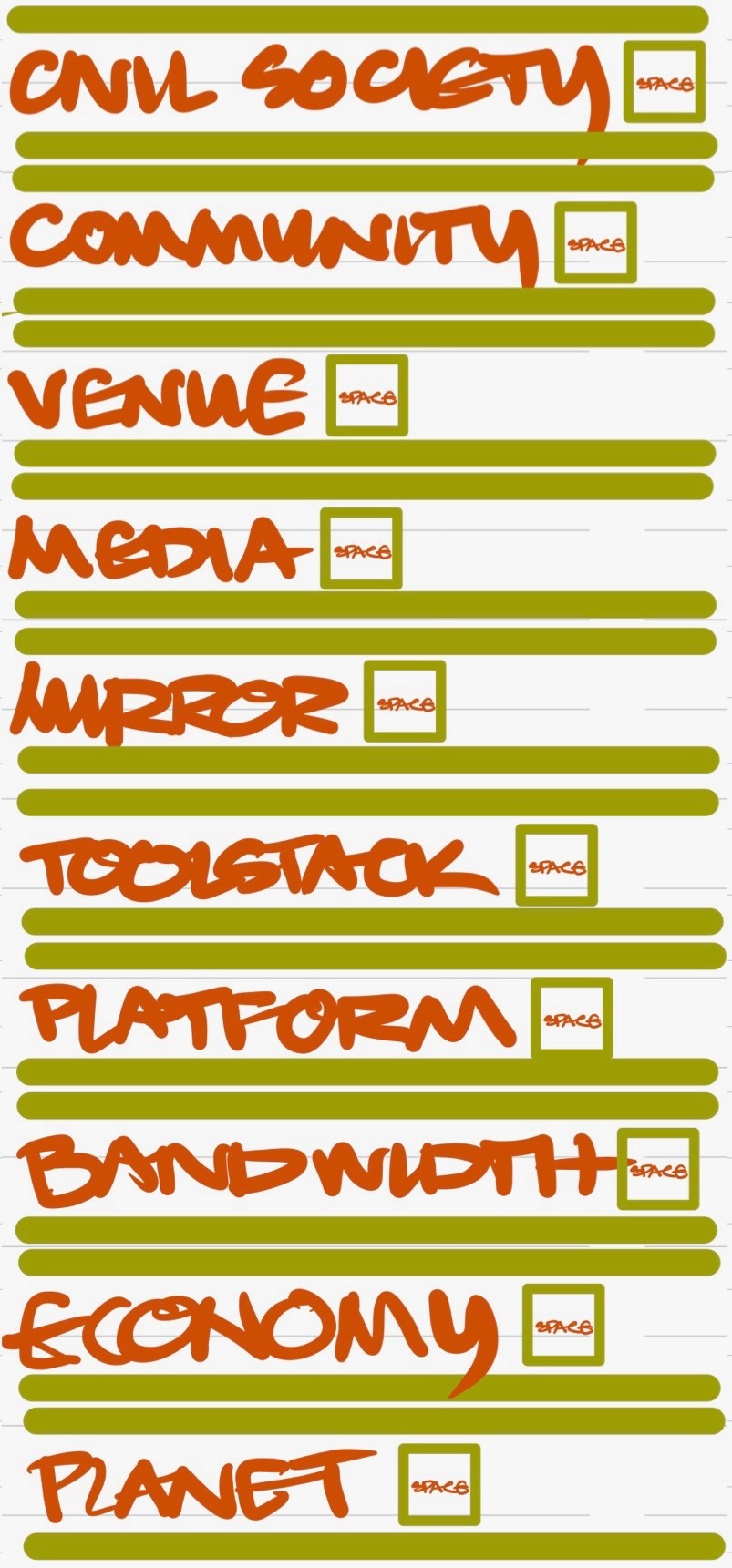Here we outline what we mean by digital infrastructuring, how significant it is, and what contra-infrastructuring might be.
Infrastructure is a constellation of many kinds of stuff, frequently - and often tacitly or invisibly - used a re-used by people and communities, to do many kinds of things that matter to them more explicitly and visibly.
> Mains water and sewage are infrastructure. Roads and houses are infrastructure. Food production and supply are infrastructure. Educational practices are infrastructure. Practices that distribute resources and ensure fairness are infrastructure.
In the past 30 years, digital means have become infrastructure; and civil society organisers depend now on digital infrastructure, just as many households do and all corporations and governmemnts and almost all markets do.
# The delusion and ambition of design A weird characteristic of infrastructures is that they evolve, incorporating things that might not have been expected to work together and achieving purposes that nobody may have anticipated. But during the past 30-40 years, a sense has emerged that infrastructures can be explicitly and intentionally assembled, on the drawing board (or rather, at the keyboard), and rolled out across the global landscape.
This delusion is associated with digitalism, and arises from the sense that, just by *writing* it - as software code - and playing it through a particular kind of replicable and distributed (and now ubiquitous) machine - computers and data stores and network tech - a global infrastructure-machine can be created that will do just what the author intended; and at a distance. It's a masculine fantasy of course. And of course, there is no singular and coherent 'author'. Infrastructure happens.
Even so, we live now in a time when infrastructure(ing) is felt to be a practical possibility. Or a necessity. Or the biggest power game in town. In consequence there's a massive tangle of infrastructure-ish stuff out there, in the digital domain. To assemble infrastructure that serves the needs and meets the concerns of commminities of actual people - rather than those of its proprietors and operators and funders - is a neccessary but difficult challenge. There has been a Digital coup.
# Infrastructure(ing) Infrastructuring is an aesthetic, which is not everyone's cup of tea. It involves a design intention, for example; some folks don't believe in design and systematic provision, spontaneiity is all. At the same time, infrastructures are beyond design: an infrastructure evolves tacitly, assembled as a composite of all sorts of means that people and communities routinely use and re-use, many of which were never intended to be in conjunction.
So infrastructuring is a complex intention which perhaps has to deal with contradictoriness: or at least, unintended and unfamiliar relationships. Here is a personal 'feel' about this: Infrastructuring aka design
# A full stack Infrastructures are plural, and thery are layered. Above for example, road systems, housing, food supply, education and the distribution of resources are all complexes of material and activity that layer upon each other, and weave together with one another. So, with an intention of developing democratic digital infrastructure in the commons, we need a sufficiently rich sense of the layering.
Contra-infrastructure(ing) is far from a tech matter: a field of geekery. The 'stack' of practices that we need extends way beyond the digital-technical - into the very fully 'social' in one direction (in global civil society) and into our deepest relationships with the planet in the other.
We approach this through a model of a 'real full stack' of commons, mediated by digital means and mobilised, curated and stewarded in the practice of digital infrastructure(ing).
> 'Stack' is a metaphor widely and loosely used in the digital sphere. We have a note on it: Stacks
Each layer in the stack is understood to be a distnct kind of 'space' or field, in which practice is enacted and relationships are held: with privileges and under obligations, supported by protocols. Each kind of space is a commons. Our full stack looks like this.

A full stack of digitally mediated commons
See: A real full stack See also: Platform-tech shopping list Toolstack shopping list